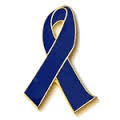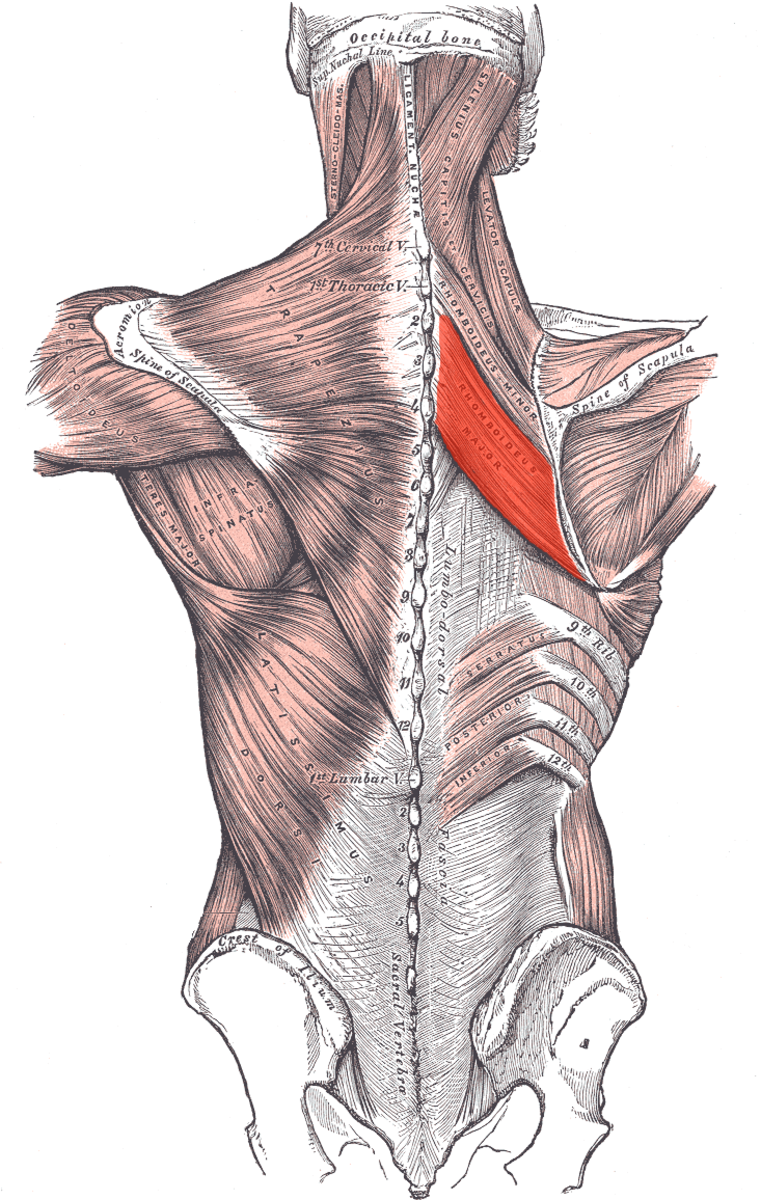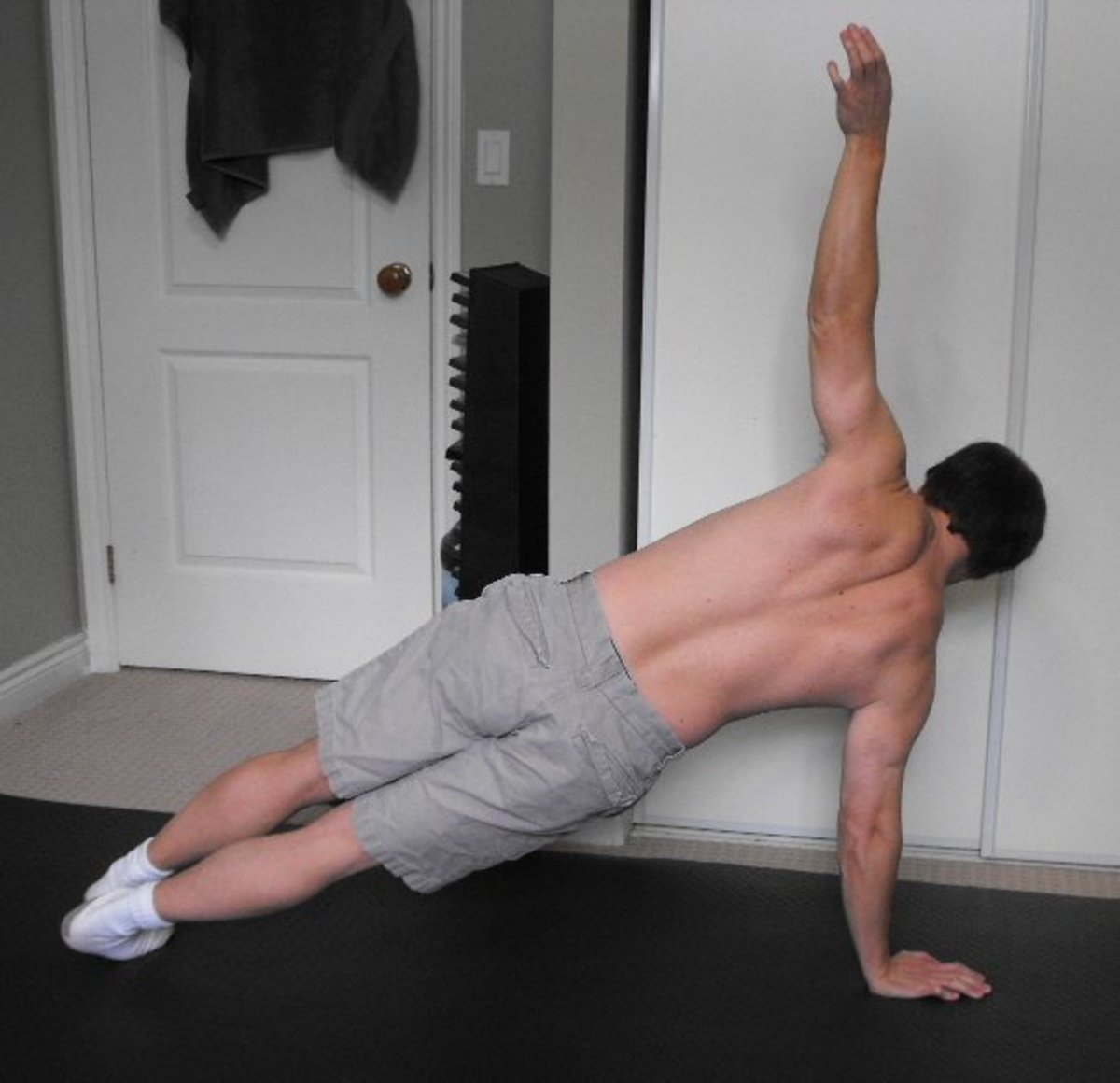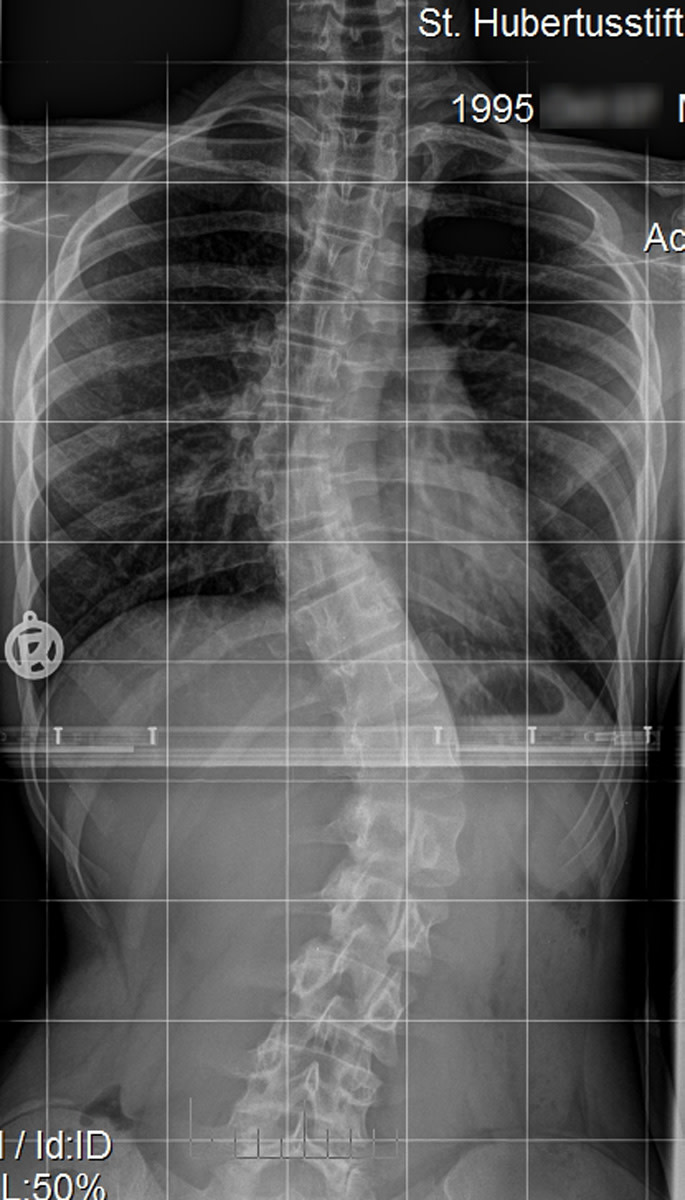The Many Different Forms Of Muscular Dystrophy
Different Types Of Muscular Dystrophy
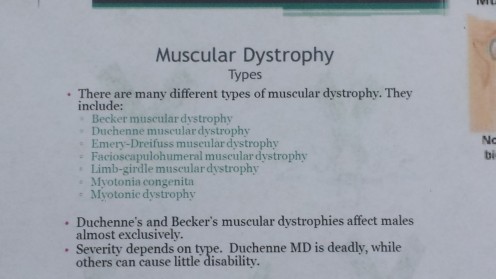
Muscular Dystrophy
Muscular dystrophy is a rare genetic disease that presently has no known cure. The children will generally carry abnormal genes or mutations that were naturally inherited from the parents. It presently is so highly rare that fewer than two-hundred-thousand people each year are disgnosed with some form of Muscular Dystrophy in the United States. Generally it causes a loss of muscle mass and a progressive wasting away of the muscles. In some types the muscles degenerate rather slowly, but in others the muscles tend to waste away at a swift pace. Muscular Dystrophy is known to weaken a patients musculoskeletal systems, kill off the muscle cells, destroys the muscle tissues, and often drastically shortens the lifespans for those who suffer. Most forms of Muscular Dystrophy begins at early childhood and the muscles will continue to degenerate into adulthood. Commonly with Muscular Dystrophy there are many inheritance patterns and the majority who carry the gene mutations will eventually have to rely completely on a wheelchair for mobility purposes. There are currently nine different forms of Muscular Dystrophy that are presently being studied and analyzed by professionals in the medical field. They include the Becker, Congenital, Duchenne, Distal, Emery-Dreifuss, Facioscapulohumeral, Limb-Girdle, Mytonic, and Oculophanaryngeal Muscular Dystrophy forms.
Becker Muscular Dystrophy

A Degenerative Disease
One well known dystrophy is the Becker Muscular Dystrophy form and it primarily affects the voluntary muscles. Commonly this allows the volantary muscles to function much better. The Becker Dystrophy is a degenerative disease that was named after a German doctor named Peter Emil Becker. General onset of the disease will normally occur in late childhood or sometimes in the adolescence years. The dystrophy tends to run a much slower course with the loss of muscles, but a Becker diagonsis also is known for being less predictable than the other forms of dystrophy. It generally first affects the muscles in the hips, pelvic areas, shoulders, thighs, patients could notice enlarged calf muscles, muscle cramps, and sometimes in serious cases the heart can be greatly affected. Another noticeable sign with Becker patients is the waddling gait whenever walking or the regulary walking on the tip toes. Sometimes only subtle cognitive deficits will appear with the Becker Dystrophy that often will include problems with memory learning, issues with emotinal interactions, verbal learning difficulties, and severe issues with attention focusing. Normally the muscle degeneration process will greatly vary from one patient to another, but the disease is never to terriably painful in the majority of patients. Most female patients never exhibit any symptoms, but the disease primarily effects the male patients. In all incidents involving the Becker form of dystrophy a child has inherited the gene mutation from the mother. Commonly the patients respiratory muscles will stay fairly strong but, eventually the muscles begin to waste away.
Congenital Muscular Dystrophy
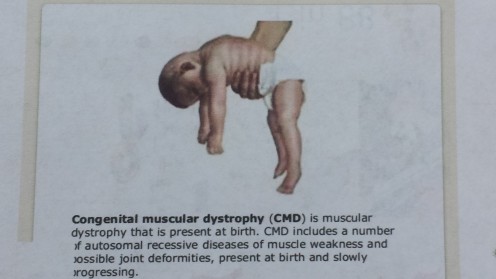
Born With A Disorder
The Congenital Muscular Dystrophy is known as a Heterogeneous disorder that is very apparent at birth or shortly after birth. Generaly a newborn baby born with the dystrophy will always appear to have an obvious lack of muscle tone and many significant learning disabilities as the baby develops into childhood. Commonly a mental adjotment and a spectrum of severity will be expected in all patients who are born with the Congenital Muscular Dystrophy form. The Congenital Muscular Dystrophy is considered a disability that causes patients many different deformities as small children. A wide variety of deformities can include paralyzed eye muscles, drawn inward thumbs, respiratory impairment, rigidity joints, abnormal flexible joints, skin blistering, rigidity spine, deformed ankles, curved feet, deformed elbows, curved spine. Another common deformity noticed in patients is the especially large calf muscles, but small muscles everywhere else on the body.
Duchenne Muscular Dystrophy
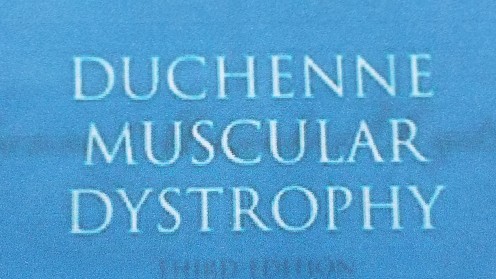
Progressive Muscle Weakness
Currently in the United States a very rare condition know as the Duchenne Muscular Dystrophy is affecting fewer than two-hundred-thousand patients each year. Roughly one out of thirty-six-hundred boys live with a condition that presently has no known cure. Both sexes can carry the mutation, but girls are rarely ever affected. Typically symptoms appear in boys at two to three years old or could even be visible by early infancy. All health professionals warn that Duchenne is definatly a medical condition that needs to be clinically observed from the time a child takes there first steps. The progressive muscle weakness in the legs normally causes frequent falls, difficulties with standing, struggles with running, having great trouble getting up from a sitting or lying position. Another complication is walking on the for-feet because of such strong calf muscle tone. With Duchenne there is an apparent loss of muscle mass and normally muscle weakness in the pelvic area. Usually after a period of time passes by a Duchenne patient will begin to notice the weakness spreading to other parts of the body. Mostly spreading throughout the arms, neck, or various other areas of the body. Many observe an elargement in there calf muscles, enlarged deltoid muscles, low endurance, and completly unable to climb up the stairs. Later on in life symptoms may include abnormal bone development, skeletal deformities, or even a curved spine. Eventually loss of movement occurs causing paralysis. The majority of men living with Duchenne Muscular Dystrophy will become paralyzed from the neck down by the young age of twenty-five. Average age for people living with Duchenne Muscular Dystrophy is currently twenty-five years old.
Distal Muscular Dystrophy
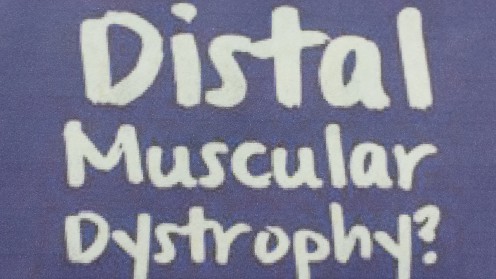
Very Slow In Degenerating The Muscles
The Distal Muscular Dystrophy type is the onset of the hands or feet. It simply affects the muscles of the extremities or a patients limbs. Often times a patients lower arms and lower legs will be harshly affected. The mutations of the dystrophy can be inherited from either one parent or maybe both parents. Normally Distal involves some Dysferlin and Pharyngeal weakness. Sometimes a person diagnosed with the Distal form of Muscular Dystrophy can experience issues with the muscles around the vocal cords. Distal Muscular Dystrophy is typically so slow in degenerating and weakening the muscles that the majority of patients never knew they even had the condition until around forty to fifty years of age. However Distal Muscular Dystrophy can sometimes show up in people anywhere from five to fifty years of age.
Emery-Dreifuss Muscular Dystrophy
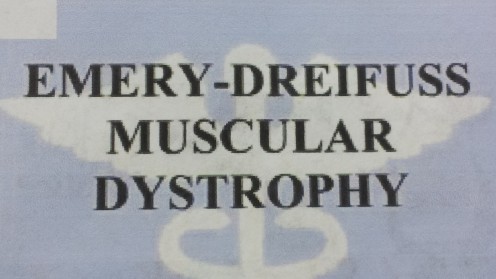
A Dystrophy Founded By Two Men
In the year of 1928, two intelligent men named Alan Elgin H. Emery and Fritz E. Dreifuss discovered a new type of Muscular Dystrophy. The two creatively skilled men eventually decided to call there fresh muscle degenerating findings Emery-Dreifuss Muscular Dystrophy. It always will generally affect the important skeletal muscles used for basic movement and also the cardiac muscles of a main organ known as the heart. A Emery-Dreifuss Muscular Dystrophy diagnosis will bring about many various signs and different symptoms. Typically the earliest features of the dystrophy are the joint deformities or often called contractures. These ristricted joint movements are normally noticed in the early childhood or adolescence years. Usually the slowly progressing muscle weakness will involve the elbows, ankles, or a patients neck. Over the years the weakness will continue to spread throughout other areas of the body and a patient will eventually be forced to rely completely on a wheelchair by young adulthood. Normally by adulthood or later the majority of patients with the dystrophy will experiance major heart problems. These severe heart issues must always be treated by a cardioligist as quickly as possible because if left untreated it could lead to a slow heartbeat, fainting, an increased risk of stroke, and then sudden death could very well take place.
Facioscapulohumeral Muscular Dystrophy
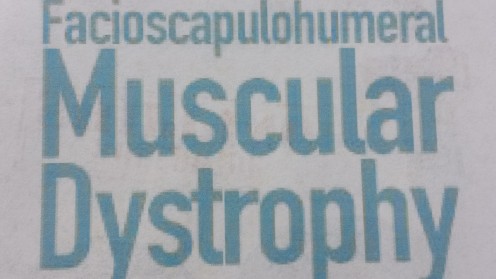
An Extremely Varitable Dystrophy
In the United States, presently a Facioscapulohumeral Muscular Dystrophy diagnosis is fairly rare. Statistics reveal that only four out of one-hundred-thousand Americans will be diagnosed with the dystrophy. Normal symptoms that are associated with Facioscapulohumeral Muscular Dystrophy tend to develop in the childhood years or possibly in the adolescence years. Usually ninty-five percent of individuals will manifest the extremely varitable disease by twenty years of age. Facioscapulohumeral Muscular Dystrophy generally will affect the skeletal muscles of the face and the upper arms. Many obvious symptoms and evident complications are present with the dystrophy. Typically they include respiratory problems, facial muscle weakness, droopy eyelids, hearing loss, difficulties pronouncing the letters M, B, and P. Other symptoms include shoulder weakness, angry facial exspressions, depressed face exspressions, unequal weakening of the biceps, triceps, deltoids, and various other lower area muscles. Due to the extreme variability of the disease there is currently no official documentation for the common symptoms in existence. The symptoms are so exceptionally different and various from one patient to the next. Normally twenty percent of patients with a Facioscapulohumeral Muscular Dystrophy diagnosis become severley disabled and will eventually be forced to fully rely on a wheelchair for mobility purposes.
Limb-Girdle Muscular Dystrophy
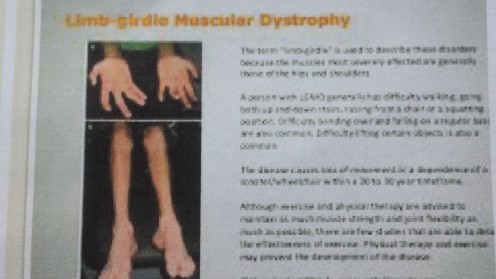
Muscle Wasting Of The Hips And Shoulders
A patient who has been diagnosed with a Limb-Girdle Muscular Dystrophy diagnosis can expect progressive muscle wasting that is predominantly located in the hips or shoulder areas. The Limb-Girdle is a rare form of dystrophy that equally affects both male and females alike. It is commonly referred to as a Heterogeneous type of dystrophy that is generally slowly In progression, with absolutely no pain present, and the patients mental functions are rarely ever effected. On average, the normal onset of the dystrophy is usually between ten to thirty years of age. However the onset has also begin reported in the childhood years, others will develop symptoms during the adolescence stages of life, many will never recognize any symptoms until adulthood, and other times many patients report that symptoms never did first appear until much later in there lives. The Limb-Girdle Dystrophy symptoms normally include a severe issue with walking, falling regularly, difficulties with lifting certain objects, complications with raising up from the chair after sitting, and having great troubles with climbing up a flight of stairs. Severally weak leg muscles continue to become much worse with passing time and in some patients the deteoration of the muscles will progress much quicker than in other patients. The dystrophy can suddenly begin to affect the muscles of the face and eventually a patients ability to walk will completly deteriorate. Commonly the Limb-Girdle form of Muscular Dystrophy will lead patients to a lifetime of total dependance of a wheelchair by the young age of twenty to thirty years old.
Mytonic Muscular Dystrophy
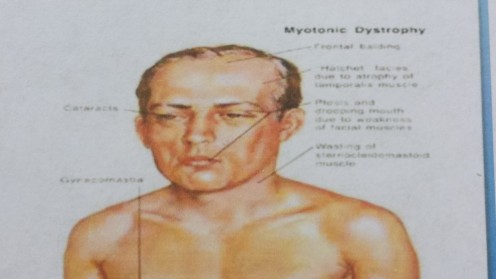
A Multi-Systemic Disease
The Mytonic Muscular Dystrophy form is known to be a chronic multisystemic disease that is fairly slow in wasting away of the muscles. Currently there are two different types of Mytonic Muscular Dystrophy and one type is much more severve than the other. Every patient must be diagnosed by health professionals to either have the type one or the type two form of the dystrophy. The type one form of dystrophy is also known as the ''Steinert Disease'' and is a severe form that occurs in adulthood. Typically patients diagnosed with type one will have onsets of myopathy symptoms. Type two is also known as ''Proximal Mytonic'' and is the milder form. Sometimes the type two form can occur in people of any age range. The signs and symptoms for both types will vary considerably. Patients with a Mytonic Muscular Dystrophy diagnosis can expect wasting away of the muscles, heart defects, cataracts, endocrine changes, difficulties with organization, severe problems with executive functions, serious issues with concentrating, and hypersomnia. Normally the dystrophy only effects adults and the early onset in young children is very rare. Death from Mytonic Muscular Dystrophy is highly unlikely, but sudden death is not always unpossible.
Oculopharyngeal Muscular Dystrophy
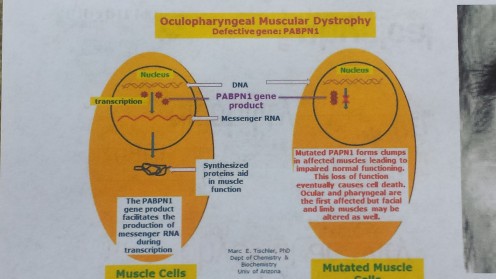
Could Lead To Malnutrition Issues
A patient who inherited the mutant gene of Oculopharyngeal Muscular Dystrophy typically will experiances muscle weakness well after forty years old. The first symptoms recognized are generally the droopy eyelids and then the difficulties with swallowing soon follows. Normally the patient begins having complications with the swallowing of foods and then the difficulties start to occur with the swallowing of liquids. These severe complications with the swallowing of food and beverages will usually lead to a higher risk of malnutrition. On average, the children with affected parents have a fifty percent chance of inheriting the mutant gene from there parents. A Proximal Limb weakness always develops later on with the disease. The upper legs and hip areas deteroriate very slowly. A patient living with Oculopharyngeal Muscular Dystrophy could significantly benefit with help from a walker or a cane. Patients diagnosed with Oculopharyngeal Muscular Dystrophy will very seldom ever have the need to require a wheelchair for mobility purposes.


